Nature: Human Warming Now Pushing Entire Greenland Ice Sheet into the Ocean

Picture above: Leading edge of the accelerating Zachariae Ice Stream meets the warming and increasingly ice free ocean on August 20 of 2013. Satellite image source: Lance-Modis.
Greenland — a vast store of ice three kilometers tall at its center and the final remnant of the Northern Hemisphere’s great glaciers of the last ice age has now begun what is likely an unstoppable rush to the sea. For according to a new report in Nature Climate Change, the last stable region of glacial ice along the Greenland coastline is now accelerating through one of the ice sheet’s largest and deepest outlets — the Zachariae Ice Stream.
Zachariae, the last domino to fall
The Zachariae Ice Stream is a vast river of ice in the northeast section of Greenland. It terminates in two outlets through a broad and deep ice-choked bay facing the Fram Strait.
Throughout the 1990s and into the early 2000s, both warmer air and ocean water temperatures at the margins of Greenland began to speed up and destabilize glaciers all along Greenland’s southern, eastern and western coasts. But the northern glaciers remained relatively stalwart, continuing the rate of seaward motion observed over previous decades.
Then, starting in 2003, something ominous began to happen. A combination of sea ice loss, warming air and ocean temperatures began to affect the northern edge of the great ice sheet. Its speed of forward motion through its outlet bays began to increase. By 2012, the great glaciers were dumping 10-20 billion tons, or roughly 10-20 cubic kilometers of ice into the ocean every single year. In just nine years the Zachariae Ice Stream had retreated a total of 20 kilometers toward the heart of Greenland. By comparison, the Jakobshavn Ice Stream, known to be Greenland’s fastest and located in South Greenland, has retreated 35 kilometers over the past 150 years.
(Greenland Ice Sheet velocity map as of 2010. Measures in red are in the range of 1,000+ meters per year. Note that ice sheet velocity is fastest at the glacial outlet face and that rapid ice sheet velocity now extends far into interior Greenland. The Zacharie ice stream, the most recent to show rapid acceleration, is indicated by the letter Z in the upper right hand corner of the image. Note how this ice stream plunges deep into the heart of Northern Greenland and that a rapid flow is now established all the way to the ice sheet’s core. Image credit: Joughin, I., B. Smith, I. Howat, and T. Scambos.)
An ice stream drains an ice sheet the same way a river drains a watershed. So long as ice stream flow and rate of glacial recharge at the top of the glacier remains about equal, the ice sheet retains stability. But if the rate of ice stream flow and surface melt exceeds the rate of recharge, the glacier is said to have begun a difficult to reverse process called destabilization.
The initiation of the great Zachariae Ice Stream’s destabilization is ominous for a number of reasons. First, it means the entire Greenland Ice Sheet has, as of the early 2000s, began a plunge into the ocean that is likely unstoppable. For once the great and massive glaciers of Greenland start to move, gravitational inertia sets in and even a radical cooling of the climate may not halt the surge. Furthermore, the Zacharie Glacier drains 16 percent of the entire Greenland ice sheet alone. And finally, Zachariae stretches deep into the heart of Greenland, extending seven hundred kilometers inland and taking hold of Greenland’s massive central glaciers in its now accelerating ocean-ward draw.
“Northeast Greenland is very cold. It used to be considered the last stable part of the Greenland ice sheet,” explained the study’s lead investigator Michael Bevis of The Ohio State University in a recent press release. “This study shows that ice loss in the northeast is now accelerating. So, now it seems that all of the margins of the Greenland ice sheet are unstable.”
(Greenland Ice Sheet ice surface elevation change in meters per year from 2003-2006, 2006-2009 and 2009-2012 respectively. Note the elevation loss of greater than 3 meters per year in Northeast Greenland near the Zachariae Ice Stream’s outlet in the final frame. Image source: Nature.)
Margin melt and increasing velocity is an important indicator of overall stability throughout Greenland. For, during much of Greenland’s history, a more solid, less mobile ice margin has kept the central ice locked in. But like the collapsing edge of a plastic swimming pool, Greenland’s drooping margins are starting to let the central ice flows surge toward the coast line. Now the ice margin is destabilized in all the major edge zones leading to the initiation of the ice sheet’s draining.
It is also worth noting that ice sheet motion is just one aspect of Greenland destabilization and a recent NASA paper shows that surface melt since 2009 has also rapidly accelerated. So the ice sheet is now a zone of accelerating glaciers and of annual surface melt all running more frequently and in ever greater volumes toward the swelling seas.
The recent study involved the use of GPS modules scattered over top of the Greenland ice sheet to measure glacial speed, mass and altitude loss. This finding is the most recent study provided by the group’s network dubbed GNET.
Greenland: An Archipelago with an Ice Sheet on Top
In understanding why Greenland’s ice sheets are likely to continue to flow into the ocean, it is useful to look at Greenland in its geological context. For Greenland is essentially an island archipelago with an enormous ice sheet sitting atop it. As such, great channels and fractures run deep into the heart of this frozen plcae. Many of these fractures are below sea level, providing ocean waters access further and further inland as Greenland melts. Furthermore, the high elevation of the ice sheet creates a kind of gravitational inertia that continuously drives glaciers toward the sea. Only friction from the anchoring ground beneath the glaciers, Greenland’s cold climate, and the chill of the surrounding airs and oceans provided Greenland with enough ice recharge while slowing the ice sheets enough to keep it stable during the last interglacial period (Holocene). Now, human warming is pulling that plug by flushing melt water to the ice sheet’s base, creating warmer ocean water invasions at the ice edge and creating conditions by which warm air increasingly both overrides the ice sheet edge and invades into the ice sheet interior.
It is in this context that we should consider the relative positions of ice stream fronts, grounding lines, and co-joining sea level as ice sheets continue their flow toward the ocean:
(Comparison of Northern Greenland ice face coming into contact with a floating glacier in transect 1 to the deep reaching Zacharie Ice Stream over-riding below sea level land masses in transect 2. Note that sub land elevation beneath the ice surface is below sea level for a stretch more than 150 kilometers inland along the base of the Zacharie Ice Stream. Meanwhile, the ice surface slope and elevation provide seaward momentum even in regions that are near or slightly above sea level. The change in velocity of various sections of ice flow are shown in the colored spaghetti lines. Image source: Nature.)
Conditions in the Context of Human-Caused Climate Change
Current atmospheric conditions now provide enough greenhouse gas forcing to destabilize ice sheets in both Greenland and West Antarctica. These levels, at around 400 ppm CO2 and at around at least 425 CO2e when taking into account all the additional negative and positive forcing from aerosols and other greenhouse gasses, were enough in past climates to send these immense regions of ice plunging into the world ocean and to raise sea levels by between 15 and 115 feet over the course of centuries (Greenland alone contains enough water locked in its ice sheets to raise sea levels by about 23 feet). All of the Greenland ice sheet and large sections of West Antarctica are now undergoing the first stages of a similar destabilization.
(Topographical map of an archipelago-like Greenland without its overlaying ice sheet. Glacial outflows are likely to be most intense toward the northeast, northwest, southwest and southeast through lower lying zones in the ranging from below sea level to about 100 meters above sea level. From the point of view of surface melt hitting the oceans, it is worth noting that the center of the Greenland ice sheet is currently taller than even the highest surrounding mountains. Image source: Commons.)
Today’s pace of sea level rise is currently 3.2 millimeters each year or a little more than a foot each century. Of this total, fully 1/6th is now being contributed by Greenland. But with inertia and gravitational forces now taking hold as massive ice sheets destabilize, and with human-caused warming continuing to ramp up, it is likely that we can expect both the Greenland ice sheet’s contribution and the pace of sea level rise to rapidly accelerate.
As the great ice sheets sped toward the oceans at the end of the last ice age, the pace of sea level rise hit as high as 10 feet each century. With the pace of human warming now about 30 times faster than at the last ice age’s fall, we may well eventually witness something even outside this difficult to understand context.
Even more ominous is the fact that greenhouse gas forcing levels that are enough to destabilize and then melt all the world’s ice sheets, eventually raising seas by about 250 feet, arrive as soon as the next few decades once CO2 (or equivalent) forcing levels hit between 500 and 600 parts per million value. The current rate of emission gets us there within about 20 years. But, unfortunately, that rate of emission is still rising even as amplifying feedbacks from terrestrial carbon stores in both the Arctic and the tropics loom.
In essence, it looks more and more, from the point of ice sheet stability, like we’ve probably at least locked in a Heinrich type event and will be well on our way to initiating total ice sheet loss over the coming two decades.
Links:
Greenland Ice Impacted Further in Sea Level Rise
Northeast Greenland Ice Sheet Loss
An Improvement in Mass Budget for the Greenland Ice Sheet
Hat tip to Colorado Bob
Hat tip to Spike



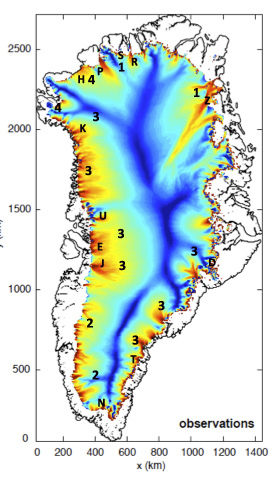















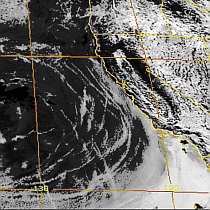













































































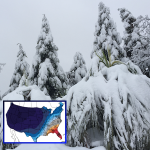




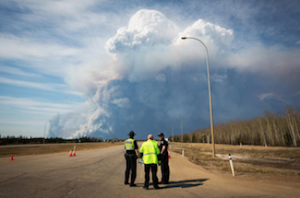









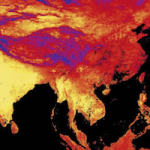
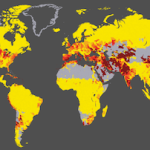










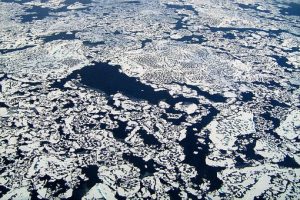















[…] Nature: Human Warming Now Pushing Entire Greenland Ice Sheet into the OceanNew Paper: Awakening Greenland Giant – Not So JollyGreenland’s icecap loses stability var TubePressJsConfig = {"urls":{"base":"http://bigonlinenews.com/wp-content/plugins/tubepress","usr":"http://bigonlinenews.com/wp-content/tubepress-content"}}; […]
First Point: Sad!
Second Point: The end really is near isn’t it?
Third Point: Yes, we are doomed.
Fourth Point: “They” don’t care!
Fifth Point: Perhaps a group of Earthers can put together an Indestructible Container Of Man showing any who survive or arrive here, or wherever and whenever it reaches a planet with intelligent beings, our history – our glories and our self-destruction. ARKs, if I can be so bold, allowing hope to other beings. Send out electronic ARKs to the millions of planets currently known. Construct several for keeping here in hopes that whenever they are discovered, can be opened, and can be recognized the message will not be destroyed but absorbed.
We have killed ourselves. Final countdown is underway. It will not happen for perhaps 150 years but it will happen. It will not be pretty getting to that final second. Sadly, we have been hypnotized into thinking we were always in control and always will be in control.
When someone finally does either return or arrive they will find evidence of past greatness and of present chaos.
It saddens me knowing we have destroyed such a once great planet and in doing so have killed ourselves!